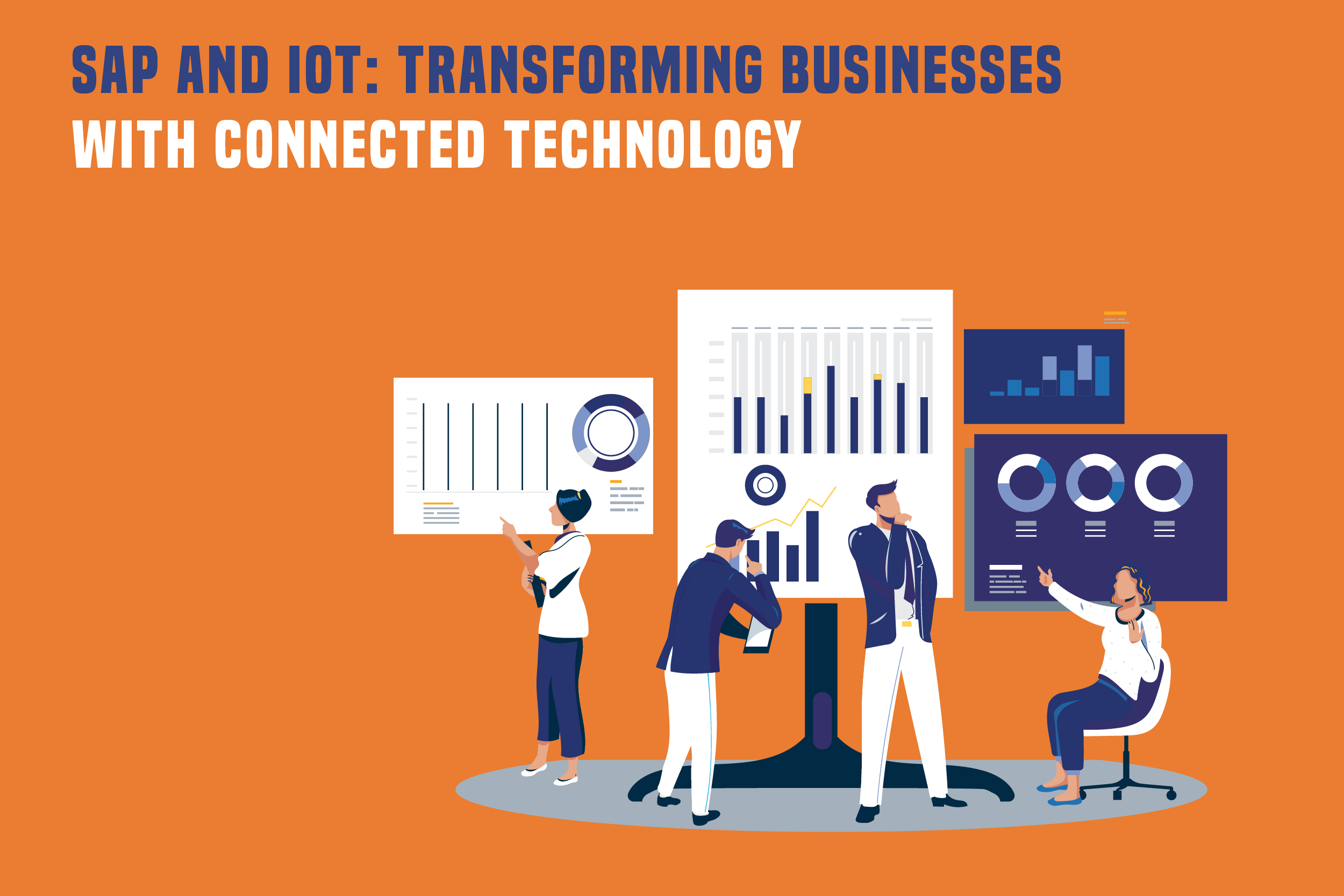
In the dynamic landscape of modern business, the integration of SAP and IoT emerges as a powerhouse, reshaping the way organizations operate and connect. This summary delves into the transformative synergy of SAP and IoT, emphasizing how this connected technology duo, coupled with SAP Implementation, is revolutionizing businesses.
SAP Implementation stands as a cornerstone in organizational transformation, strategically optimizing SAP solutions’ utilization to drive efficiency and innovation.. It catalyzes harnessing the full power of SAP and IoT, facilitating a cohesive and effective integration that aligns with the unique needs and goals of each business.
The integration of SAP and IoT heralds a new era in how businesses collect, analyze, and leverage data. By implementing SAP, organizations integrate IoT seamlessly, enhancing their SAP ecosystems with real-time data, driving informed decision-making and innovation.
With SAP Implementation driving the integration, businesses can navigate the complexities of connected technology with ease. This transformative journey extends across various facets of operations, from supply chain optimization and predictive maintenance to personalized customer experiences. SAP Implementation ensures that the integration is not just a technological upgrade but a strategic evolution that enhances overall organizational efficiency.
Furthermore, SAP Implementation acts as the linchpin in overcoming implementation challenges, ensuring a smooth transition to a connected future. It guides organizations in optimizing their ERP systems, fine-tuning processes, and fostering a culture of continuous improvement that is essential for success in the digital age.
So, the synergy between SAP and IoT, orchestrated by SAP Implementation, signifies more than a technological shift. It embodies a strategic transformation that empowers businesses to thrive in the connected era. As organizations implement SAP solutions, integrate IoT connectivity, and embrace SAP Implementation, they embark on a journey of business excellence, agility, and sustained growth, leaving an indelible mark on the evolving landscape of connected technology.
In the rapidly evolving landscape of technology, the integration of the Internet of Things (IoT) with enterprise solutions. It has become a game-changer for businesses seeking to enhance efficiency, streamline operations, and gain a competitive edge. One of the leading players in this convergence is SAP, a global leader in enterprise application software.
This blog will explore the synergies between SAP implementation and IoT, delving into how this partnership is revolutionizing businesses across industries and driving digital transformation.
To comprehend the impact of SAP and IoT integration, it is essential first to understand the fundamentals of IoT. The Internet of Things refers to the network of interconnected devices, sensors, and systems that communicate and share data in real time. These devices can range from industrial machinery and smart appliances to wearable devices, creating a vast ecosystem of data exchange. The true power of IoT lies in its ability to collect, analyze, and act upon this data, driving informed decision-making.
SAP, renowned for its enterprise resource planning (ERP) solutions, has been a pivotal player in digital transformation for decades. Its suite of applications enables organizations to integrate and streamline business processes, enhancing visibility, collaboration, and overall efficiency. The marriage of SAP with IoT technologies amplifies these benefits, creating a powerful framework for businesses to thrive in the digital era.
One of the key advantages of integrating SAP with IoT is the ability to harness real-time data analytics. ERP implementation systems must be capable of handling increasing volumes of data generated by a growing number of connected devices. IoT devices generate a continuous stream of data, and SAP’s analytics capabilities enable businesses to derive meaningful insights from this information promptly. Whether it’s monitoring equipment performance, tracking supply chain movements, or analyzing customer behaviour, the combination of SAP and IoT facilitates data-driven decision-making.
In industries such as manufacturing, where equipment downtime can lead to substantial losses. So, predictive maintenance is a game-changing application of SAP and IoT integration. By leveraging sensor data from machinery, SAP can predict potential issues before they escalate, enabling organizations to schedule maintenance proactively. This not only reduces downtime but also extends the lifespan of equipment, optimizing operational efficiency.
In the realm of supply chain management, SAP and IoT collaboration provide unparalleled visibility into the entire process. From tracking the movement of goods in real time to monitoring environmental conditions during transportation. Businesses can optimize their supply chain operations for efficiency and cost-effectiveness. This level of transparency ensures better decision-making, reduces risks and enhances overall supply chain resilience.
SAP’s customer experience solutions, combined with IoT data, enable businesses to personalize interactions and anticipate customer needs. For example, in the retail sector, IoT devices can collect data on customer preferences and behaviours. SAP’s CRM (Customer Relationship Management) applications can then use this data to tailor marketing strategies, promotions, and product recommendations. So, it creates a seamless and personalized customer experience.
The impact of SAP and IoT integration is not confined to a specific industry rather, it spans across diverse sectors. Here are some industry-specific applications that highlight the transformative power of this collaboration:
In the healthcare sector, IoT devices such as wearable health monitors and smart medical devices generate vast amounts of patient data. Integrating this data with SAP’s healthcare solutions enhances patient care by providing real-time insights, improving diagnosis accuracy, and optimizing resource allocation within healthcare organizations.
As an IT solution consultant, your role extends to integrating the data collected from IoT sensors into SAP’s agriculture solutions. This data, when combined with SAP’s agriculture solutions, enables farmers to make data-driven decisions, optimize irrigation, and maximize crop yields.
So, in the energy sector, SAP and IoT collaboration can revolutionize energy management. Smart meters and sensors in power grids provide real-time data on energy consumption and grid performance. SAP’s energy management solutions leverage this data to optimize energy distribution, reduce wastage, and enhance overall grid reliability.
While the benefits of SAP and IoT integration are vast, it is crucial to address challenges such as data security and privacy concerns. This involves setting up user roles, permissions, and multi-factor authentication. It helps to restrict access to sensitive data within the ERP implementation system. Businesses must implement robust cybersecurity measures to safeguard the influx of data from IoT devices. Additionally, compliance with data protection regulations and industry standards is paramount to ensure the responsible and ethical use of data.
As technology continues to advance, the collaboration between SAP and IoT is poised for further innovation. Edge computing, artificial intelligence, and blockchain are emerging trends. It will further enhance the capabilities of this partnership. Edge computing, in particular, allows data processing to occur closer to the source, reducing latency and enabling faster decision-making in IoT applications.
So, the integration of SAP and IoT represents a transformative force in the business landscape. An IT solution consultant plays a crucial role in guiding organizations through the complexities of SAP and IoT integration. The ability to harness real-time data, optimize processes, and drive informed decision-making positions organizations for success in the digital age. As industries continue to evolve, businesses that embrace the synergy between SAP and IoT will be better equipped to navigate the complexities of today’s dynamic market and secure a competitive advantage. The journey towards digital transformation is undoubtedly ongoing, and SAP, coupled with IoT technologies, is at the forefront, paving the way for a connected and intelligent future. If you want to know more about this, visit our website.
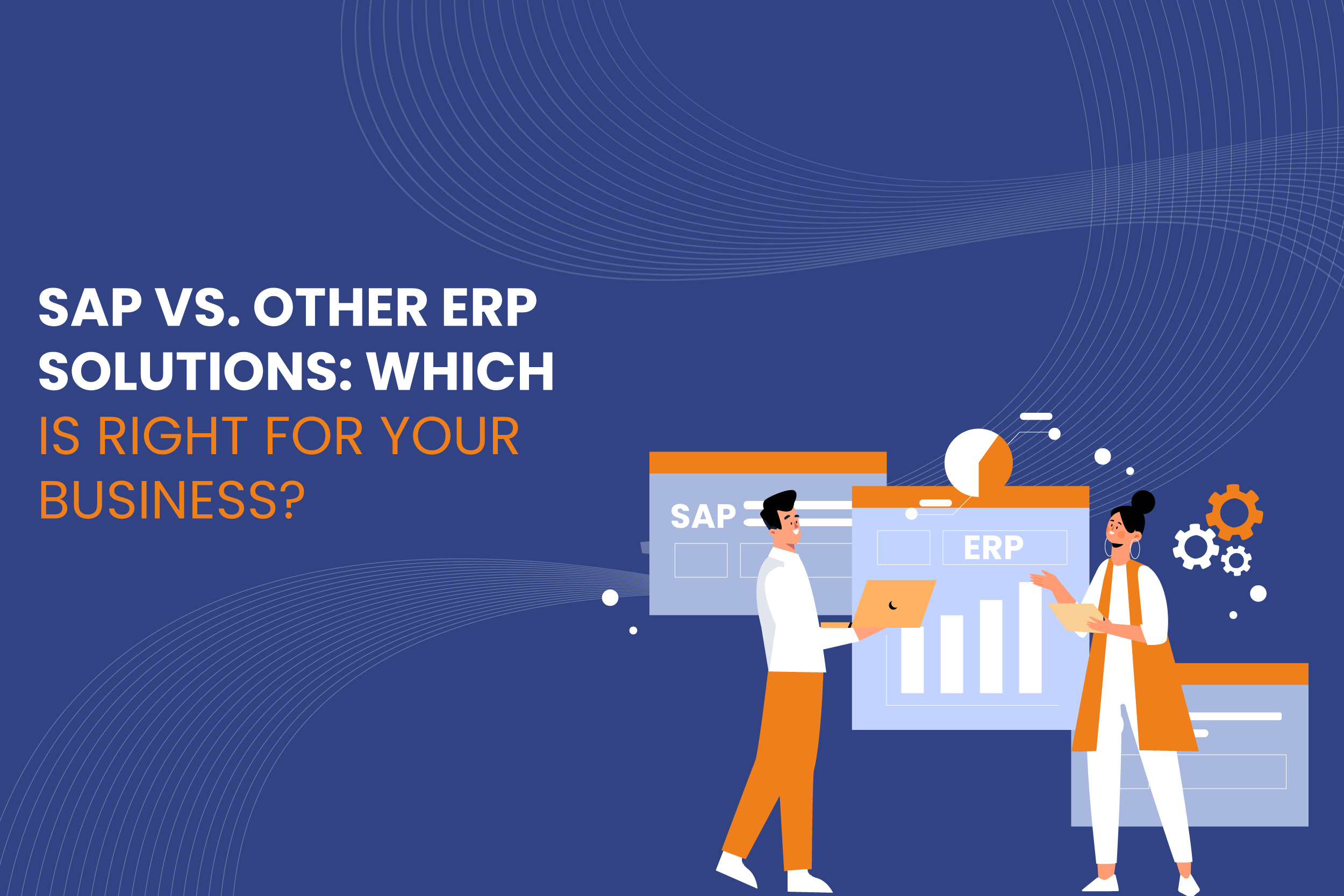
In today’s competitive business environment, organizations must be equipped with efficient, reliable, and scalable systems to manage their operations. Enterprise Resource Planning (ERP) solutions provide companies with the tools to streamline their processes, integrate various departments, and enable data-driven decision-making.
Among the vast array of ERP solutions, SAP is one of the most well-known, but it’s not the only option. Businesses must consider whether SAP or another ERP solution is the right fit based on their unique needs.
Read More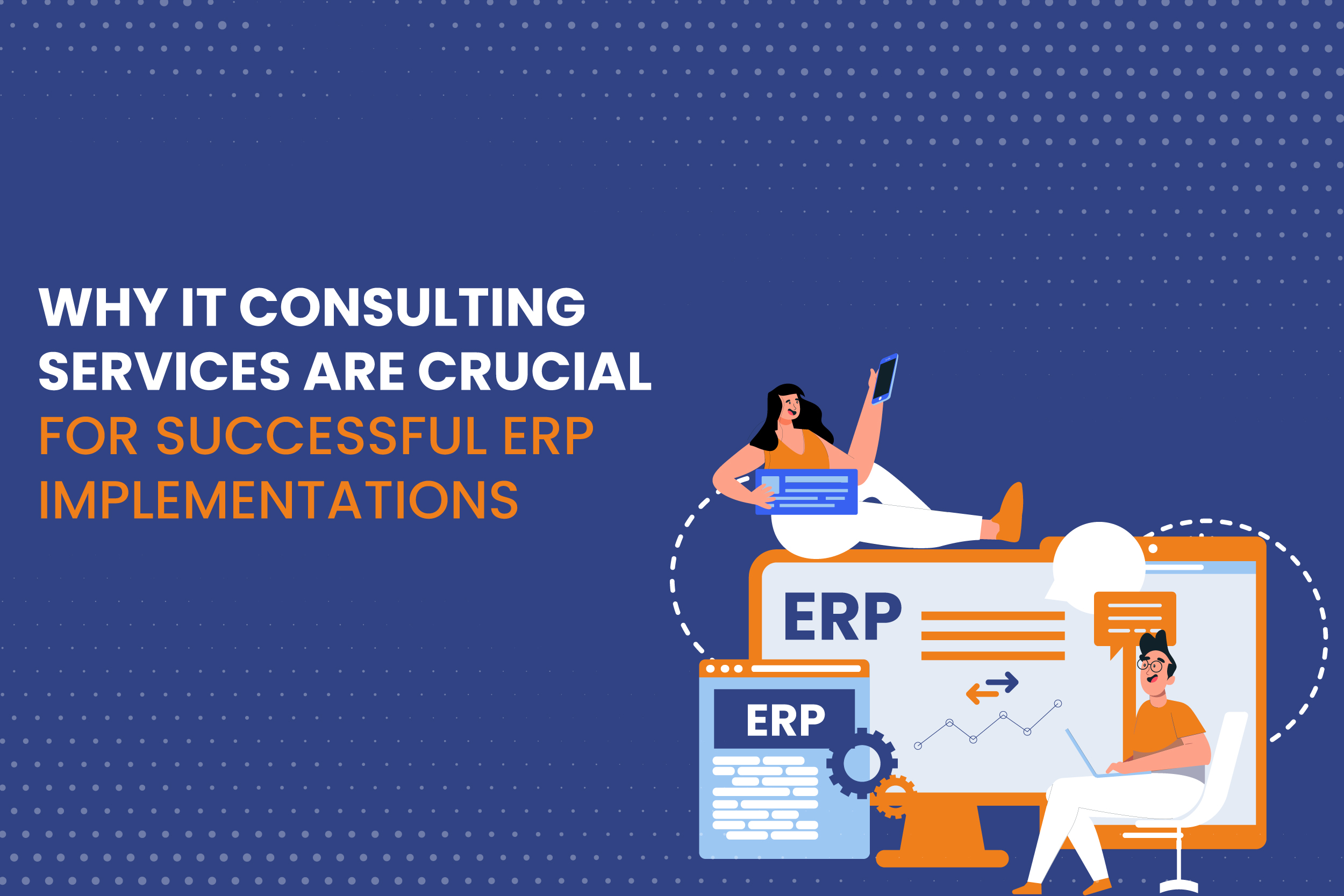
Enterprise Resource Planning (ERP) systems have become the backbone of modern business operations. Whether it’s handling financials, human resources, supply chains, or manufacturing processes, ERP solutions streamline and automate vital business functions, fostering efficiency and growth. SAP, one of the leading ERP platforms, is often the go-to choice for organizations due to its robust and customizable features. However, ERP implementation—whether SAP or another system—is not without challenges. This is where IT consulting services play a pivotal role.
The complexities of ERP implementations require specialized expertise, and IT consulting services provide the technical know-how, strategic planning, and ongoing support that are critical to successful deployment and long-term functionality.
Read More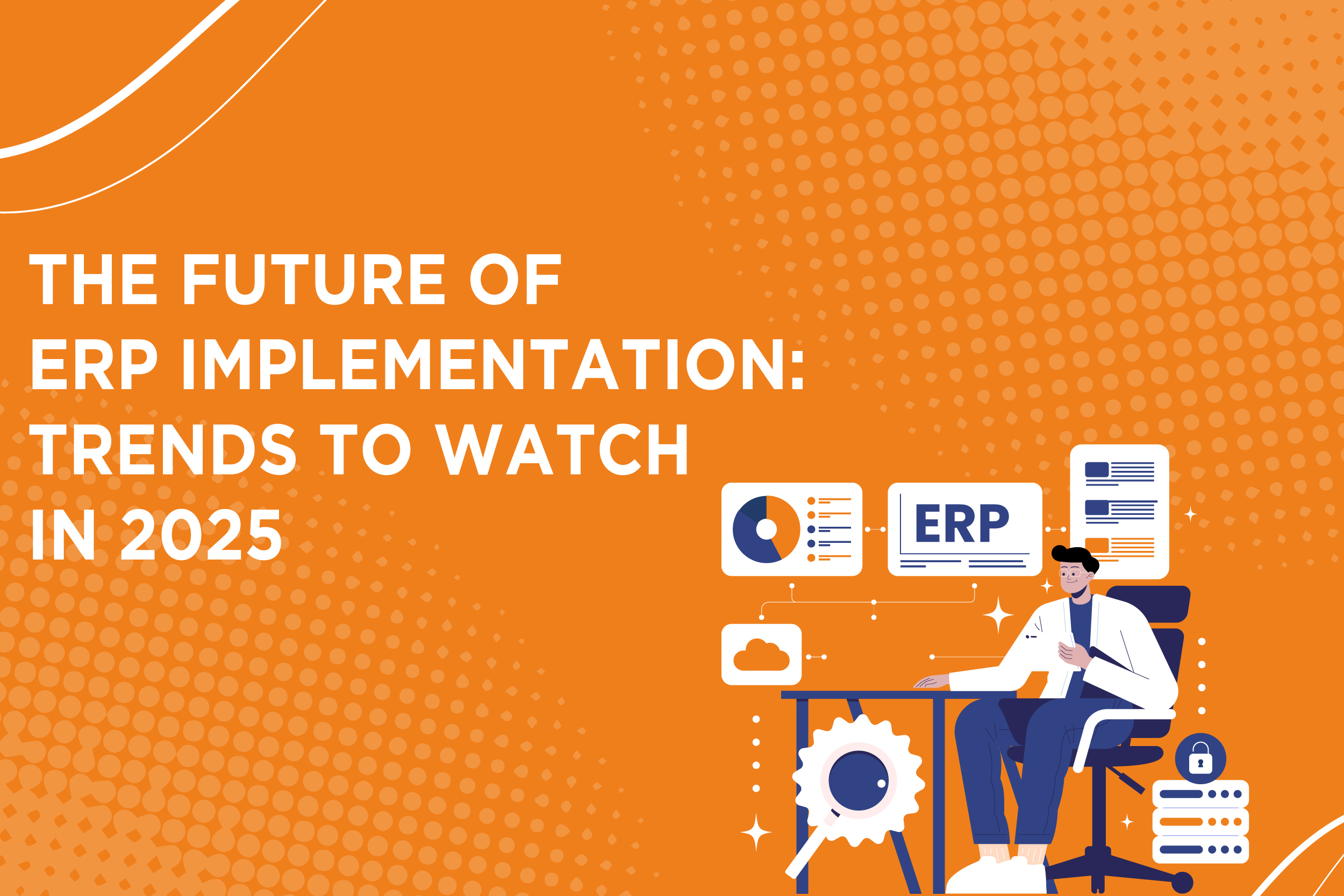
In the rapidly evolving business landscape, enterprise resource planning (ERP) systems are essential for companies looking to streamline operations, improve data accuracy, and enhance decision-making processes. As we look toward 2025, the future of ERP implementation is promising, with significant trends emerging that are reshaping how organizations deploy and manage their ERP systems. From advancements in SAP implementation to innovations in IT consulting services, businesses must keep a keen eye on these trends to remain competitive.
Read More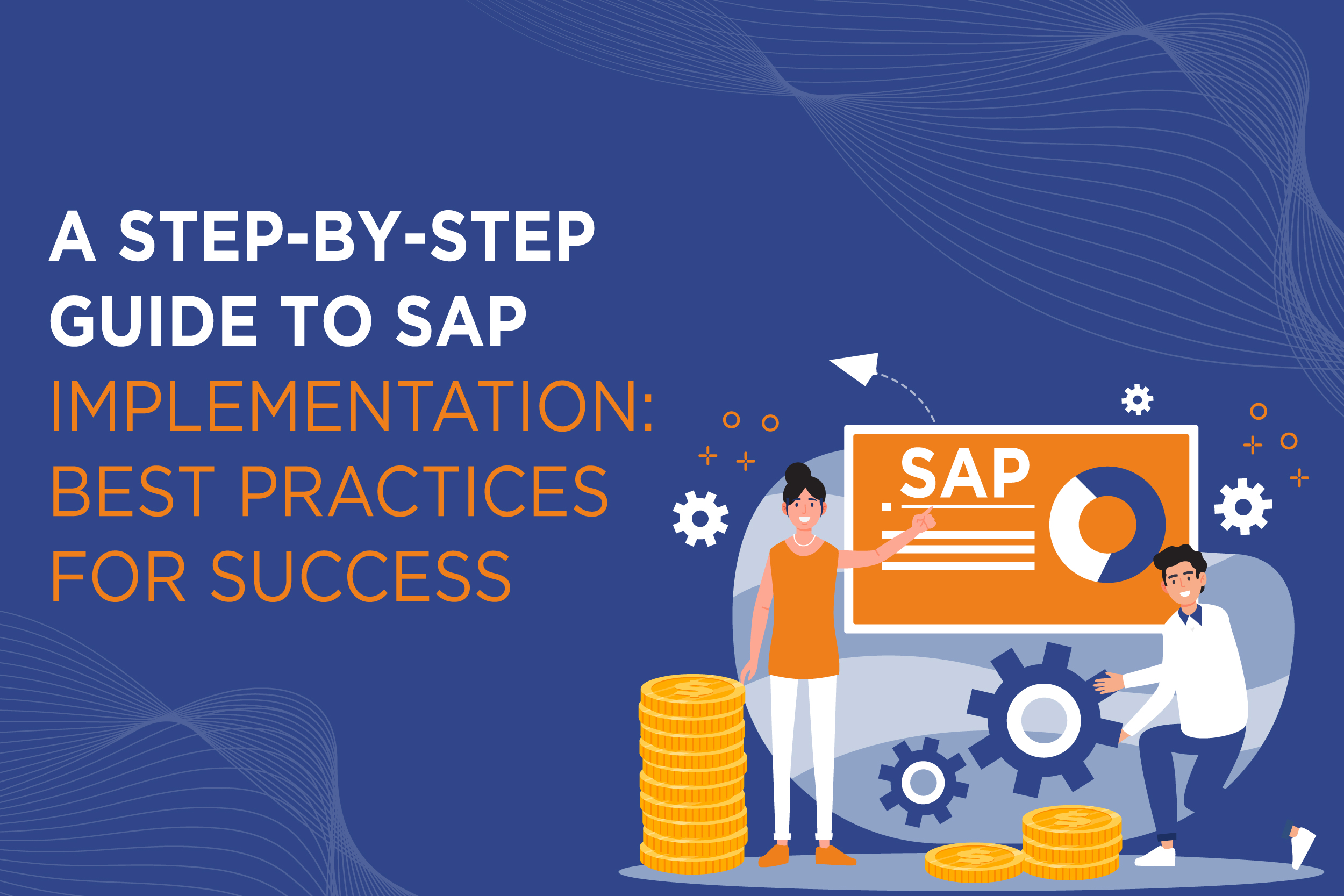
Implementing an SAP and ERP system is a major milestone for many organizations seeking to streamline operations, enhance efficiency, and support future growth.
However, SAP implementation is a complex and resource-intensive process that requires meticulous planning and execution. Done right, it can transform your business. Done wrong, it can lead to significant disruptions.
Read More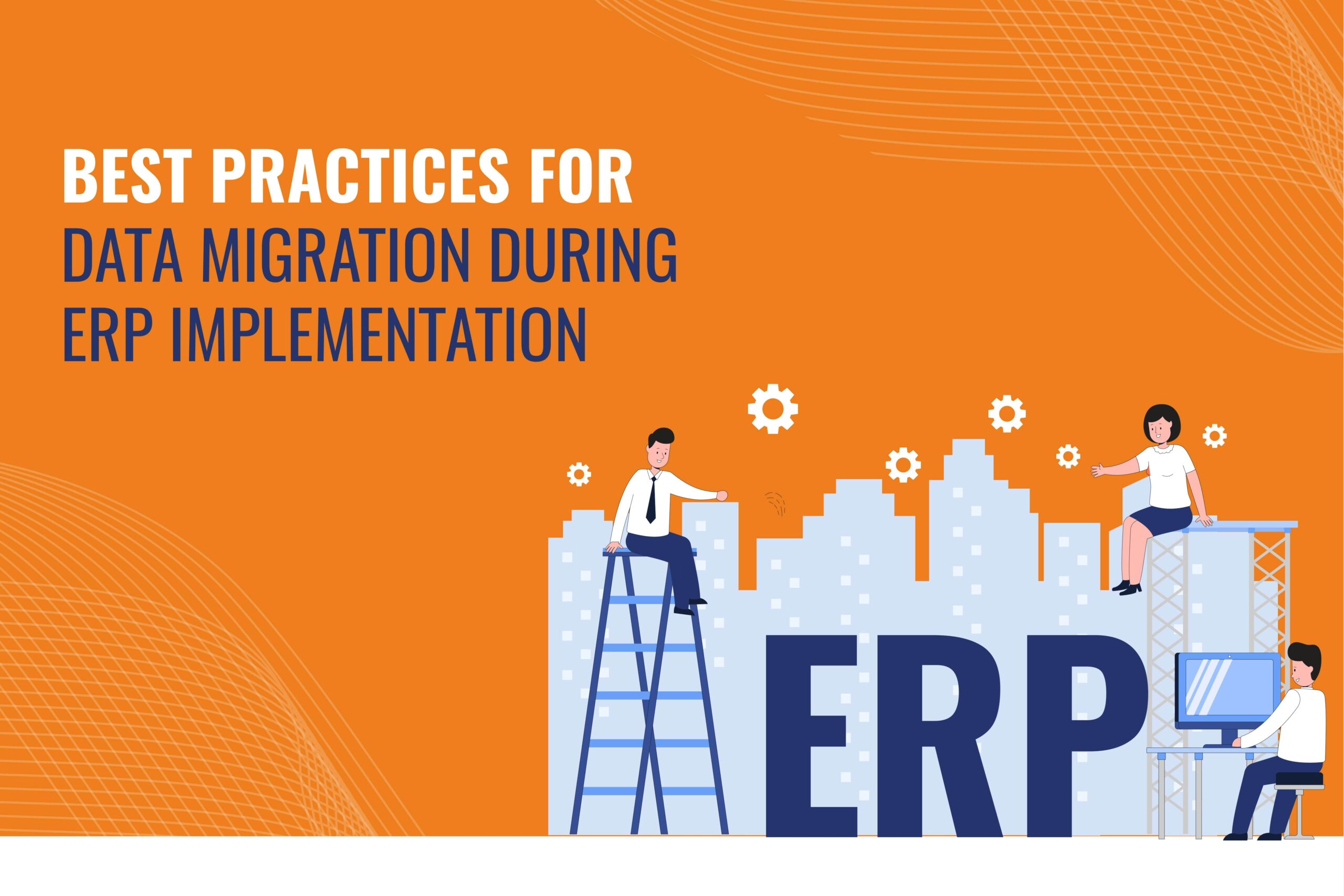
Implementing an ERP system is a transformative step for organizations, offering streamlined processes and strategic insights. However, the success of an ERP implementation largely depends on effective data migration, which involves transferring data from legacy systems to the new platform. This process is complex and requires meticulous planning to avoid disruptions to business operations.
Data migration involves activities like data extraction, transformation, cleansing, and loading (ETL). The goal is to ensure data from various sources is accurately transferred and integrated into the ERP system, maintaining data integrity and accessibility.
Organizations face several challenges during data migration. These include ensuring data quality, managing compatibility issues between different systems, handling the volume and complexity of data, minimizing downtime, and ensuring compliance with security regulations. Addressing these challenges is crucial for a successful ERP implementation.
To overcome these challenges, organizations should follow best practices. These include establishing clear objectives and scope for the migration, conducting comprehensive data assessments, and developing a robust migration strategy. Investing in data cleansing and transformation, engaging stakeholders, and performing rigorous testing and validation are also key. Additionally, implementing data governance and security measures, and planning for contingencies, are essential to mitigate risks.
Following these best practices ensures smooth data migration, enabling organizations to fully leverage their ERP systems’ potential. This paves the way for enhanced efficiency, agility, and competitiveness in the digital landscape, laying a solid foundation for future growth and digital transformation.
Read More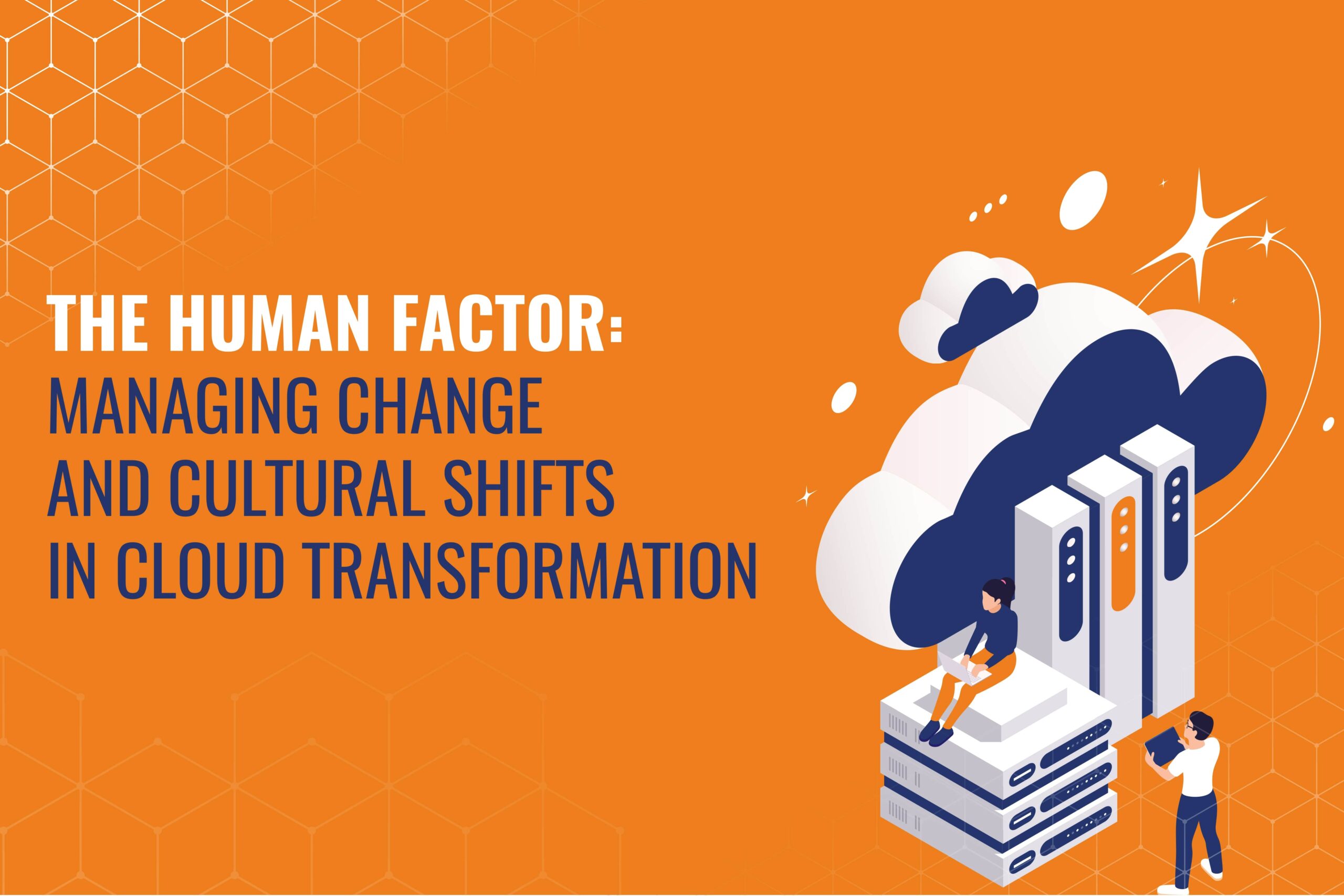
In the landscape of technological evolution, cloud transformation stands as a cornerstone for modern businesses seeking enhanced scalability, agility, and innovation. However, a critical yet often overlooked aspect lies beneath the surface of technical intricacies: the human factor. Managing change and cultural shifts is paramount for successfully adopting cloud technology.
At its core, cloud transformation extends beyond mere technological migration. So, it represents a fundamental shift in organizational culture and mindset. Embracing this shift requires a holistic approach that addresses technical challenges and the human elements within the organization.
Change management is a pivotal component of cloud transformation, facilitating the transition from traditional to cloud-native paradigms. Effective change management strategies involve clear communication, stakeholder engagement, and proactive efforts to address resistance to change.
Cultural shifts are intrinsic to cloud transformation as organizations strive to align their values and behaviors with core cloud principles such as agility, innovation, and customer-centricity. So, this involves breaking down silos, promoting cross-functional collaboration, and empowering employees to embrace new ways of working. Leaders are crucial in driving cultural change, championing cloud vision, and fostering a supportive environment encouraging experimentation and risk-taking.
So, workforce readiness emerges as a critical consideration in cloud transformation, requiring organizations to assess and enhance their employees’ skills and capabilities. Upskilling and reskilling initiatives can help bridge the gap between existing skill sets and the evolving demands of the cloud-native ecosystem. Additionally, providing adequate training, support, and incentives can empower employees to embrace the transformative potential of cloud technology.
Ultimately, successful cloud transformation hinges on effectively managing change and cultural shifts. By recognizing the human dimension of cloud adoption and investing in strategies that promote collaboration, innovation, and employee empowerment, organizations can unlock the full potential of the cloud and drive sustainable growth in the digital era.
Read More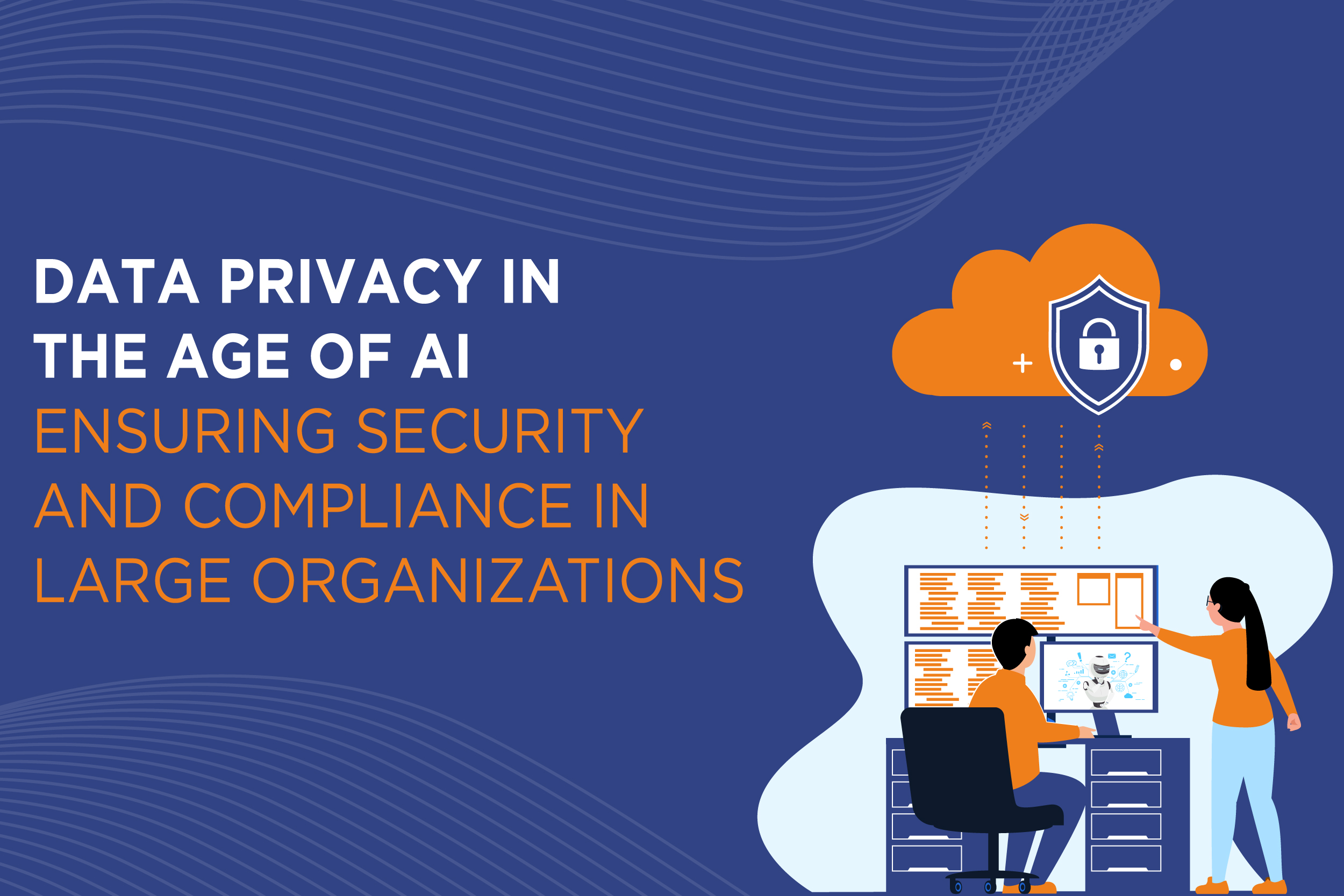
In the era of artificial intelligence (AI), ensuring data privacy is paramount for large organizations to maintain security and compliance with regulations. This challenge is accentuated by the vast amounts of data collected and processed by AI systems, heightening concerns about potential breaches and misuse.
Organizations must implement robust data privacy measures across the entire data lifecycle to address these concerns, from collection to disposal. This begins with implementing stringent access controls to limit who can interact with sensitive data and encryption to protect data both at rest and in transit. Additionally, this technique can remove personally identifiable information from datasets, reducing the risk of accidental exposure.
Furthermore, organizations must establish clear policies and procedures for data governance and compliance. This includes conducting regular audits to ensure adherence to data privacy regulations such as the General Data Protection Regulation (GDPR) and the California Consumer Privacy Act (CCPA). Moreover, employees should receive comprehensive training on data privacy best practices to foster a culture of compliance throughout the organization.
In parallel, organizations should invest in AI-specific security measures to safeguard AI models and algorithms. Additionally, deploying robust intrusion detection systems can help identify and mitigate potential threats to AI systems in real-time.
Collaboration with external stakeholders is also crucial for ensuring data privacy in the age of AI. This includes partnering with third-party vendors who adhere to stringent data privacy standards and regularly assessing compliance with these standards. Furthermore, engaging with regulatory bodies and industry groups can provide valuable insights into evolving data privacy requirements and best practices.
Despite these measures, the evolving nature of AI and data privacy regulations necessitates ongoing vigilance and adaptation. Organizations must continuously monitor Artificial intelligence and data privacy developments, updating their policies and technologies accordingly. By prioritizing data privacy and security, organizations can mitigate risks, build trust with stakeholders, and ensure long-term success in AI.
Read More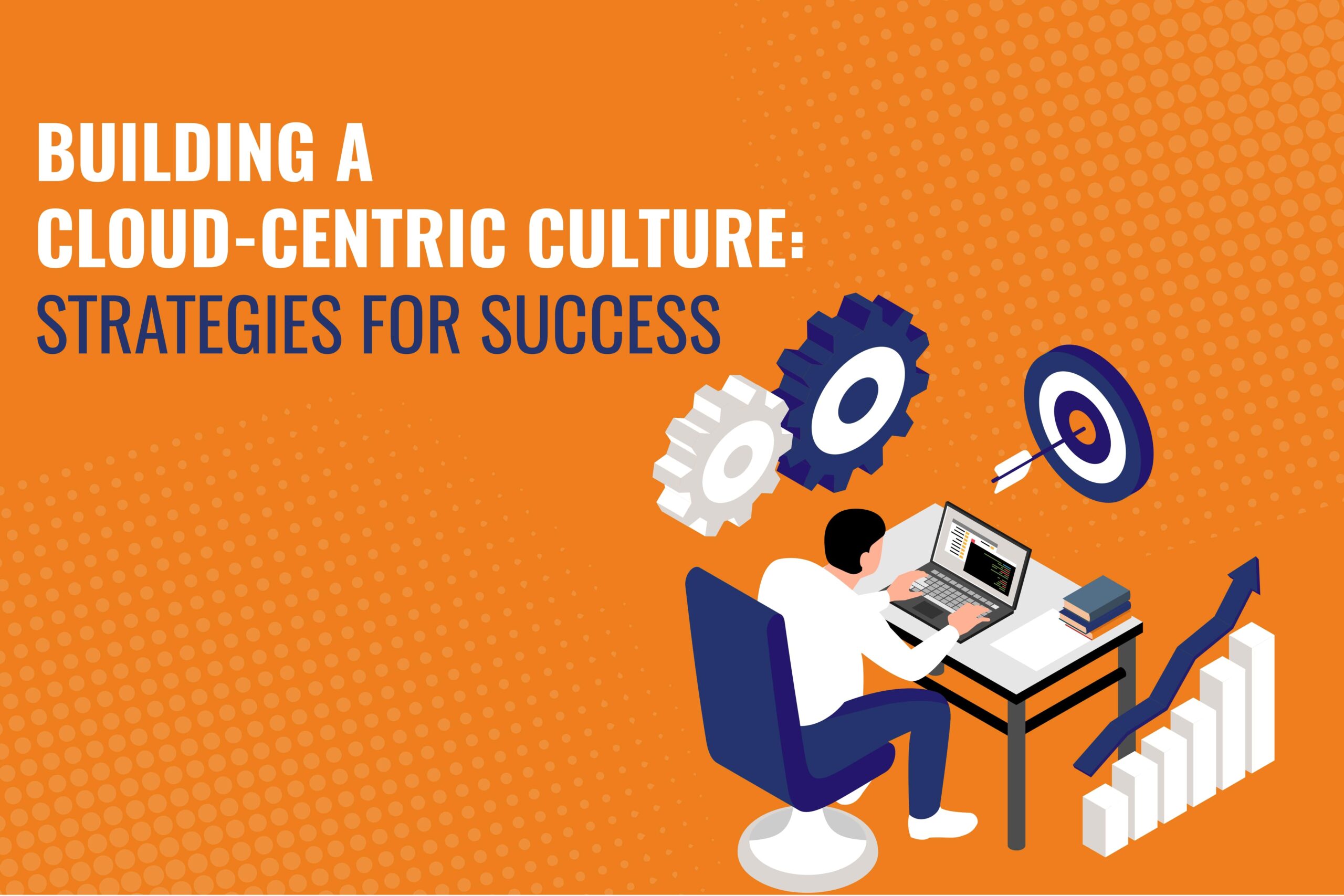
In today’s rapidly evolving business landscape, cloud transformation has become synonymous with innovation, agility, and competitive advantage. As organizations increasingly embrace cloud computing to drive digital transformation, building a cloud-centric culture has become crucial and imperative for success.
A cloud-centric culture is characterized by a mindset that embraces the transformative power of cloud technology and prioritizes. Its integration into every aspect of the organization’s operations, processes, and decision-making. It goes beyond merely adopting cloud solutions; it fosters a culture of collaboration, innovation, and continuous improvement.
One key strategy for building a cloud-centric culture is to promote awareness and understanding of the benefits of cloud transformation across the organization. This involves educating employees about cloud technology’s capabilities, its impact on business operations, and the opportunities it presents for driving innovation and growth.
Another critical aspect of cultivating a cloud-centric culture is to lead by example. Executive leadership must demonstrate a commitment to cloud transformation by championing its adoption. It invests in the necessary resources and infrastructure, and actively participates in cloud initiatives. Moreover, organizations must not only empower employees to become cloud advocates but also, consequently, champions within their respective teams and departments. This involves providing training and development opportunities to build cloud expertise and fostering a culture of experimentation and risk-taking.
Effective communication is also essential for nurturing a cloud-centric culture. Organizations should regularly communicate their cloud strategy, goals, and progress to employees, ensuring transparency and alignment. Organizations can cultivate a sense of ownership and commitment to the cloud transformation journey by keeping employees informed and engaged.
Furthermore, fostering collaboration and cross-functional teamwork is vital for building a cloud-centric culture. Cloud transformation often requires breaking down silos and facilitating cooperation between different departments and teams. Organizations can harness collective intelligence and creativity by encouraging collaboration and knowledge sharing.
In conclusion, building a cloud-centric culture is not only about adopting new technology but also about, therefore, transforming how people think, work, and collaborate by actively promoting awareness. It is leading by example, empowering employees, facilitating communication, and fostering collaboration, organizations
Read More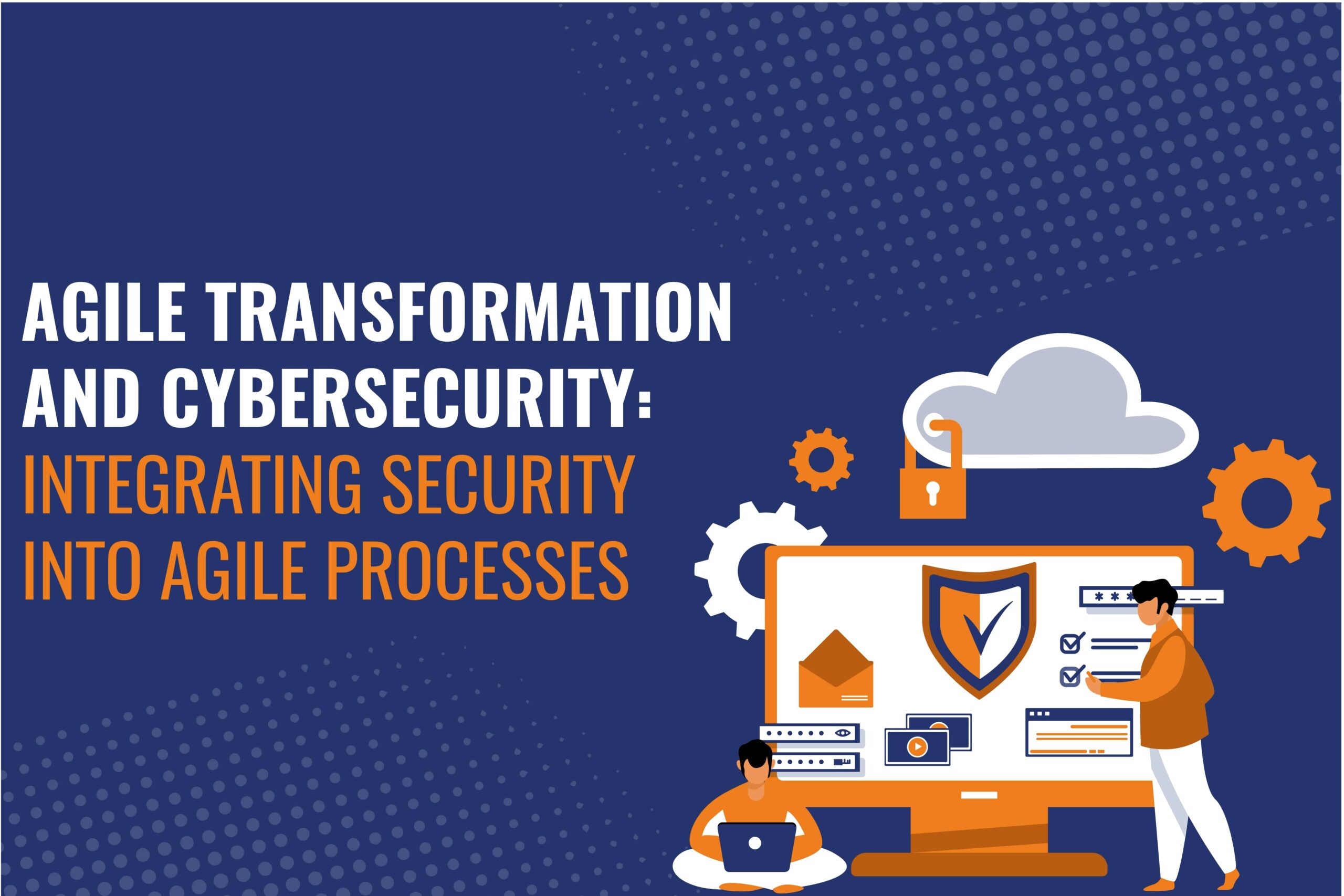
In today’s fast-paced digital landscape, agile transformation is necessary for businesses striving to stay competitive and responsive to evolving market demands. Agile methodologies enable organizations to adapt quickly to changing requirements, deliver products faster, and foster innovation. However, as businesses embrace agile practices, they must prioritize cybersecurity to safeguard their assets and maintain operational resilience.
For IT solution consultants, integrating security into agile processes is paramount. This involves seamlessly embedding security considerations into every stage of the software development lifecycle, from planning and design to implementation and deployment. By incorporating security practices into agile methodologies, organizations can mitigate risks and address vulnerabilities proactively rather than as an afterthought.
One key strategy for integrating security into agile processes is by leveraging automation. By automating security testing in CI/CD pipelines, teams can quickly detect and fix vulnerabilities throughout the development lifecycle. This accelerates delivery cycles and consistently applies security measures, reducing the likelihood of security breaches and downtime.
Furthermore, IT solution consultants are crucial in promoting a culture of security awareness and collaboration within agile teams. This collaborative approach fosters a shared understanding of security risks and responsibilities among team members, empowering them to take ownership of security outcomes.
An IT solution consultant offers expertise in implementing security best practices, including secure coding, threat modeling, and vulnerability management. By equipping agile teams with the knowledge and tools to prioritize security, consultants enable organizations to build resilient and trustworthy software products.
Ultimately, agile transformation and cybersecurity are intertwined aspects of modern business operations. As businesses embrace digital transformation, IT consultants will crucially integrate security into agile methods, ensuring successful and secure IT initiatives.
Read More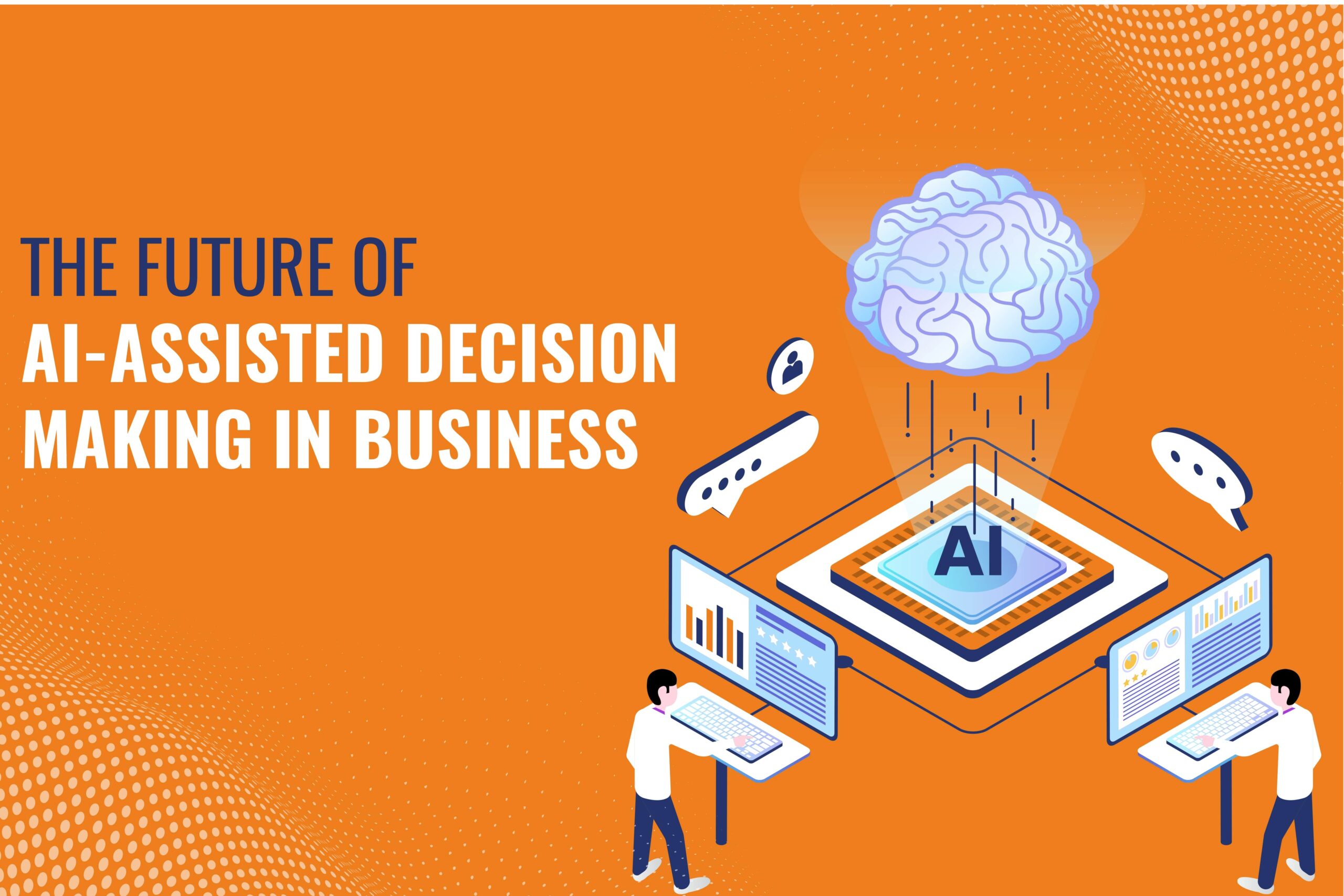
In the rapidly evolving landscape of modern business, integrating artificial intelligence (AI) is increasingly becoming a cornerstone of decision-making processes. This transformation promises to redefine how businesses operate, strategize, and compete in the global marketplace. As we peer into the future of AI-assisted decision-making, several key trends emerge, shaping how organizations harness AI’s power to drive success.
AI is set to transform decision-making by enhancing human intelligence with its unmatched capacity to swiftly process extensive data. AI systems use advanced algorithms and machine learning to analyze complex data, uncover patterns, and reveal hidden insights.
Furthermore, AI-powered decision-making holds the potential to optimize resource allocation and mitigate risks in an increasingly volatile and uncertain business environment. By leveraging predictive analytics and scenario modeling, AI systems can anticipate market trends, identify potential threats, and recommend proactive strategies to mitigate risks and capitalize on opportunities.
Moreover, AI-driven decision-making democratizes access to insights and expertise, empowering businesses of all sizes to compete on a level playing field. With the proliferation of AI tools and platforms, even small and medium-sized enterprises. So, it can harness the power of AI to streamline operations, optimize processes, and drive innovation.
The future of AI in business will see continuous advancements, integrating AI into every aspect of organizational operations. AI is set to impact all business areas, from customer service to financial forecasting, boosting efficiency, agility, and innovation.
So, the future of AI-assisted decision-making in business is bright and promising. It offers unprecedented opportunities for organizations to drive growth, innovation, and success. By harnessing the power of Artificial Intelligence to augment human intelligence, optimize resource allocation, and democratize access to insights. In addition, it embraces ongoing advancements in AI technology, and businesses can position themselves for long-term success.
Read More
Leave a Reply